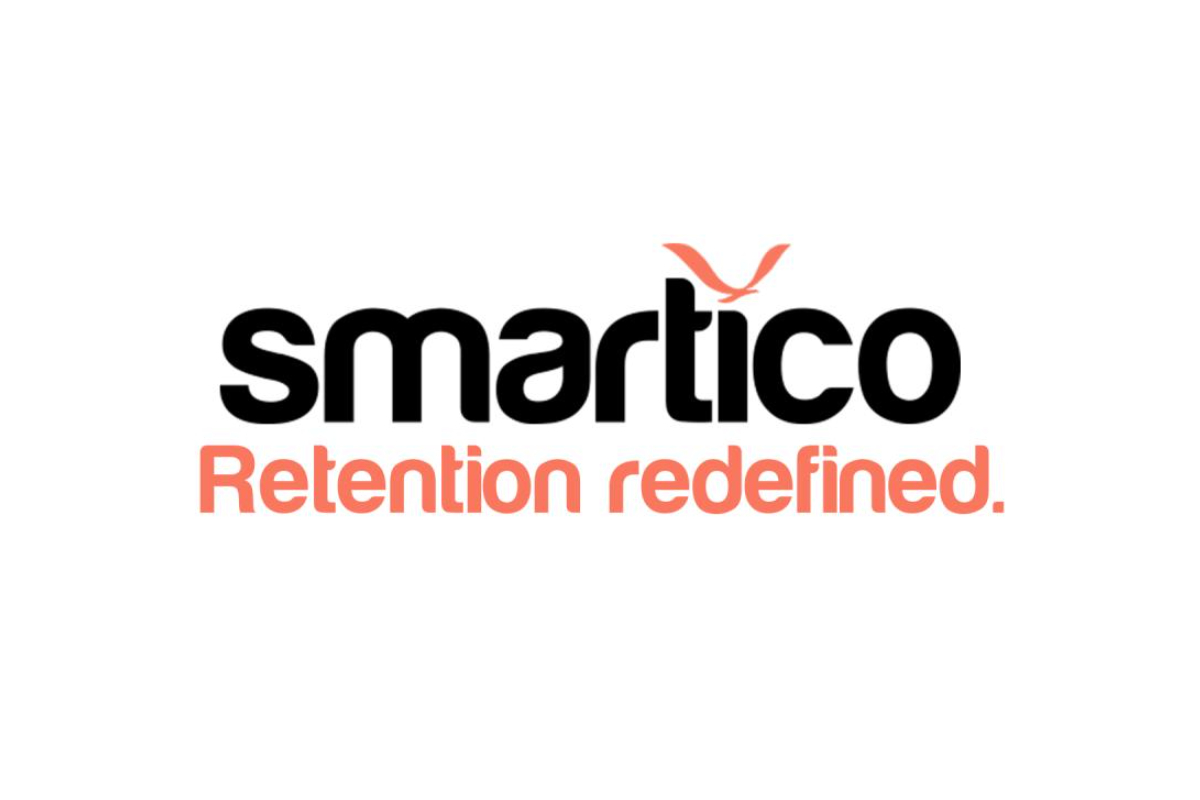Latest News
HOW AUTOMATION WORKS FOR SPORTS BETTING PROMOTIONS? THE SMARTICO METHOD

Pass it to Maradona! It was an incredibly successful football strategy in the 1980s. Sometimes, even the God apparently lent a hand to the strategy’s success!
Similarly, ‘pass it to the machine’ must be an equally fruitful marketing strategy of our times. It basically means to automate the whole customer relationship management (CRM) process.
But how do you actually pass it to the machine?
Well, here is how it works. If you are not quite well-versed with the CRM and marketing activities, first let us quickly have a run down on how the marketing process works in a betting company’s CRM division. Then we will see how it is automated with Smartico’s platform.
A word about the platform before we begin. It has three major parts:
- Real time marketing application
- Gamification tool
- Real time business intelligence (BI) module
Sportsbook Operator’s Conventional Promotional Method
The CRM division of every major Sportsbook works super efficiently to attract maximum players to punt on the games that they promote.
Let’s take a look at how the CRM division works before a major game of European football. The CRM division sends all sorts of promotions and intimations to players in their databases.
Promotions can be in the form of any format, mainly the following:
- Emails
- SMS on their phones
- Messages on their social media feeds like Facebook or Twitter timeline
- Push notifications to the app users
- Pop-ups on the website
The operators have to get the text needed for emails and message notifications, videos and graphics for social media promotion for each game separately and schedule their sending on appropriate timings on CRM software.
Then there are the categories of players, or buckets as they are sometimes called. For example,
- one bucket of regular, loyal customers,
- another comprising occasional customers,
- yet another having only newly joined customers,
- another bucket comprising dormant customers and so on.
For each bucket, the promotional feature has to be customized. That is, different versions of emails, social media graphics and messages are ideally required for each category of players. Some clusters of customers will also need some kind of bonuses or offers to spur them into punt for this game. So the CRM operators have to add information about such bonuses manually too.
As you can see, it involves cumbersome manual work and there is a good chance that the intended message still may not reach the right player.
Automation can make the process easy and ensure that each player receives exactly the right kind of messages and intimations.
Inside the Automation Process with Smartico
Smartico’s three-pronged software application makes life easy for CRM operators.
The operators need to get the various kinds of creatives done as previously – text, graphics, video and all that. They have to create at least one template for each mode of communication too: for email, SMS push notification, social media posts and so on.
That’s all. The software will take care of the rest.
It uses special dynamic tags to deliver the right kind of content about the right match to the right players through the right channel by leveraging the real time BI module that churns live player data.
The CRM operators can select the games from a list of upcoming games across leagues that they want to promote. The software will initiate an automated marketing campaign at a scheduled time before each match.
One of the software’s most useful features is the Campaign flow builder, which allows the operators to create the flow and order of sending various modes of communication. For example, first send emails, then push notifications or SMS, then social media promotions and and finally show a popup when the player logs in to the website or app of the sportsbook.
Each of the communication will contain two kinds of creatives:
- Fixed
- Dynamic
Fixed communication will be the text, graphics and video that are intended to persuade the players to sign in and place bets.
Dynamic communication refers to the text and graphics that provide the information that keeps on changing from match to match: such as the names of the competing teams, the league, stadium, date and time of the match and such like. If the communication offers bonuses or special offers, the text and graphics depicting the bonus or offer are also will be part of the dynamic communication.
The software will automatically populate the dynamic elements in each communication based on the real time data of player behavior data and preferences. For this the software makes use of something called dynamic tags.
To sum up, the work flow of the operator changes as follows:
- Create the templates of email, messages, graphics and videos
- Choose the matches that need to be promoted
- Select with the targeted population of customers (That is, the operator can opt for promoting Bundesliga matches just to the players who routinely bet on Bundesliga matches only)
- Set the starting time for the campaign – how many day, weeks or even months before the match (even if matches are postponed or get cancelled for some reason, the software will alter the communication schedule accordingly)
- Insert bonus offers, wherever needed.
- Pick the order of communication modes through Campaign flow builder
- Sit back and watch the results
This way, the operators can think about improving the overall quality of the marketing campaigns and look for innovations, rather than running hurriedly to tick each boxes of the communication mix.
The software saves time, delivers better results and better streamlines the operations.
So, pass it to the machine!
Powered by WPeMatico
Interviews
Scaling With Purpose: RedCore’s Tech Vision Explained

Reading Time: 7 minutes
At SiGMA Central Europe in Rome, European Gaming Media sat down with Yevhenii Yankovyi, Vice President of Technology and Deputy CTO at RedCore, for a deep look into what truly powers RedCore’s large-scale engineering operations.
RedCore is known for innovating at enterprise level, yet moving with the agility of a fast-growing tech company. In this conversation, Yevhenii breaks down how the organization manages that balance: how engineering teams maintain both speed and reliability, how automation empowers creativity, and why culture must remain a daily practice rather than a one-time achievement.
Can you introduce yourself and RedCore’s approach to engineering at scale?
Sure. My name is Yevhenii, I’m the Vice President of Technology at RedCore and Deputy CTO. RedCore is a large company with many products and projects, so everything we do operates at a significant scale. And when people hear “enterprise-level engineering,” the usual assumption is that scale automatically means slowness: slow decision-making, slow implementation, slow testing, slow time to market.
That’s the mindset we challenge. We don’t believe speed and stability are opposites. In our experience, at this level of complexity, the two actually reinforce each other. When you build the right processes, the right technical foundations, and the right organizational structure, speed becomes a natural result of stability – not something that contradicts it.
We plan for scaling from day one. For us, that’s a fundamental requirement. We build products with the expectation that they will grow, and growth means scale. So we design with that in mind from the very first line of architecture.
But that doesn’t mean disappearing for six or ten months to design the “perfect” system. That’s the common mistake people make when they hear “design for scale.” Our approach is different: we keep the long-term vision in mind, but we move fast, iterate, and make sure the product can evolve without slowing the team down. Stability and speed working together – that’s the engineering culture we build at RedCore.
How does RedCore balance speed and stability in daily engineering?
I will explain this with a simple metaphor: think about a car. Everyone talks about acceleration and top speed, but none of that matters if you can’t take a corner. Speed alone is not the winning formula – you also need control.
That’s exactly how we look at engineering at RedCore. We want to accelerate, make decisions quickly, and develop fast. But we also need the ability to slow down at the right moment, change direction, and stay agile. Balancing speed with stability is the only way to move at scale.
There are many layers to this – it’s a topic I could talk about for days – but in a nutshell:
at a big scale, you must have strong standards, clear policies, and a high level of automation. We rely heavily on automation: infrastructure as code, CI/CD pipelines, automated testing, and all the tools that remove repetitive, routine work from engineers’ daily lives. When the routine disappears, people can focus on what humans actually do best: creativity, problem-solving, and innovation.
However, automation doesn’t build the software for you. It creates a safety net. It catches mistakes, guards quality, and supports engineers when their creativity pushes boundaries. In other words: tools give freedom, and also protect that freedom.
And of course, this includes AI and many other modern tools. We use whatever helps us keep the balance: give people space to think, create, and experiment, while ensuring the system stays stable, predictable, and high-quality.
How does RedCore’s management keep teams aligned yet fast?
First of all, we provide clear goals. As I mentioned earlier, we always design for scale from day zero – but you can only do that if you know exactly what you’re building, for whom, and why. We have a very strong business team that understands the market and what needs to be delivered. The technology team works side by side with them, reinforcing them.
Once the goals are clear, we begin small. If you try to build a huge system from the beginning and get it wrong, you create a nightmare: something no one can support, change, or grow. Complexity grows exponentially, and humans don’t think exponentially; we think linearly. That’s where companies often get lost.
So we avoid that by validating early and validating often. We start with small steps, keep a close eye on every direction we take, and confirm that what we’re building is truly needed by the market. When we see that the direction is right, then we scale – and by that point, the foundation is already in place. It’s like preparing a launchpad so that when the time comes, the team can accelerate immediately.
We build block by block and work in iterations. We take a small team – one, two, maybe three people – and let them experiment for a week. We test the idea fast, get quick feedback, and bring it to the business side: “Do you like it?” If the answer is yes, then we continue, still following all the proper engineering practices before anything goes into production.
This constant loop between business and technology keeps everyone aligned. We give feedback, we receive feedback, and we move together. That’s how we stay both fast and coordinated, always ready to scale when the direction is confirmed.
How does automation empower engineers without slowing them down?
When we talk about automation, we’re really talking about optimization at scale. It doesn’t make sense to over-engineer small things, but at the scale we operate, the cost efficiency and speed gains are enormous. And people often assume that big systems and automation automatically slow everything down. For us, it’s the opposite.
The tools we introduce are not meant to tie engineers’ hands with bureaucracy. We don’t force strict guidelines or heavy processes that kill creativity. Our tools exist to help: to prevent mistakes, to collect feedback quickly, and to give teams the shortest possible path from idea to validation.
Here’s a simple example: we start experimenting with a small feature. We build a tiny prototype to see if the idea works. If it’s promising, the next step is testing, pipelines, deployment – all the things that normally take time. In many companies, engineers would try to do all of this manually because “building the tools will take too long.” But with us, the tools are already there. The infrastructure, the CI/CD, the automation – everything is ready to use. Our engineers are essentially customers of this internal platform that supports fast, safe delivery.
We have many different teams that have different great ideas. If one team tries something new and it works better, great – we learn from it. If another team has a different approach because of product specifics or release schedules, that’s fine too. We give freedom to the teams to work, share their experiences, and then scale.
Of course, there are non-negotiables. When it comes to security and data privacy there is zero tolerance. These are areas where strict rules are absolutely necessary. I always tell the security people: everyone should be a little afraid of you, because these things must be perfect. But outside those critical areas, we don’t impose rules that slow teams down. We experiment, gather feedback, adjust, and keep improving.
We’re constantly researching, experimenting, and customizing our automation depending on the product and the market. But when it comes to system design, we don’t reinvent the wheel. We choose globally recognized tools and industry-validated technologies. So yes, we empower engineers with automation and the right tools, built on a solid, modern foundation.
How does culture work for you – is it an achievement, or part of your routine?
Culture is a critical element in balancing speed and stability. Tools and processes matter, but culture is what truly empowers a team and keeps everything together at scale.
For us, culture starts with giving people freedom: the freedom to experiment, the freedom to make mistakes, and the freedom to challenge ideas. We don’t want engineers to be afraid of trying something new. We build a culture where mistakes are acceptable and manageable. If we try something and it doesn’t work, great – now we know better. We learn, adjust, and move on.
We encourage ideas from every level. Some of our most interesting insights come from developers who notice something while working on a small task. They can come directly to me or to the CTO and say, “I see a problem here.” It’s completely okay. A small detail in one corner of the system can become a huge issue at scale, so we listen. That’s how we avoid blind spots.
We also give teams autonomy. Small teams can make their own decisions and experiment in their own ways. If different teams want to do things differently, that’s fine – as long as they validate everything and share their findings. We want people to help each other and to understand that even top engineers have ups and downs. Even senior management makes mistakes. I constantly ask my team: “If I make a wrong decision, tell me.” It’s not about transparency as a buzzword – it’s about behavior. People observe how you respond, and they learn from that.
The biggest mistake any leader can make is demotivating people. We work with intelligent, educated, passionate professionals. They want to contribute. You just need to give them the space to do it. That’s when you see people shine and bring forward brilliant ideas.
As for the question of whether culture is an achievement or a routine – for us, it’s definitely a routine. People often talk about “building a strong engineering culture” as if it’s a success. We treat it as a routine as a process. Culture is the daily interactions between people in an organization. Those interactions change: people come and go, someone has a bad day, someone disagrees with a decision. Culture is shaped every day by how we communicate, how we argue, how we respect each other, and how we resolve differences.
Going to a colleague in the kitchen and asking, “Hey, what do you think about this?” – that’s culture. Anyone can talk to anyone, openly. And when engineers realize they can make a real impact, that they are heard, that they can influence the product — that motivates them. That’s what keeps the culture alive.
How do you balance standards with creative freedom?
The first thing is that we don’t pressure people. We set strict standards only where they are truly critical for the business. Security, data privacy, stability at scale – those areas demand clear rules. But everywhere else, we try not to push people. And when we do introduce a standard or guideline, we listen carefully to feedback. If the team tells us we made the wrong call, that’s okay – we rethink it and look for better approaches.
The second thing is that as the projects grow, the teams scale as well. Even in the design phase, we don’t start with a huge team. I prefer a small group: one key person who leads the design initiative, plus two or three contributors who constantly review, test, question, and give feedback. If three or four people align in one direction, that’s a good signal we’re on the right track. Then we take that proposal to a larger group – people who might use it or need it.. We refine it again based on their input. The idea evolves, but we don’t need to start from the beginning.
Finally, when we have a strong direction, we present it to the entire tech team. And even then – even if top management already supports the decision – it’s completely acceptable for a mid-level developer to raise concerns. Maybe they’ve seen something before, maybe they read an article, maybe they faced a similar issue. We listen, because at scale, one overlooked detail can cost millions.
So once again, balancing standards with creative freedom is about scaling the processes step by step: we start with a small group, validate in small cycles, and then scale the decision up gradually. This approach protects creativity, ensures high quality, and keeps us aligned. And combined with our culture, it makes the process both fast and safe.
The post Scaling With Purpose: RedCore’s Tech Vision Explained appeared first on European Gaming Industry News.
Alinda van Wyk
Super Group Comments on United Kingdom Autumn Statement

Reading Time: < 1 minute
Super Group (SGHC) Limited, the parent company of Betway, a leading online sports betting and gaming business, and Spin, the multi-brand online casino, notes the United Kingdom Autumn announcement:
In this Autumn Statement, the UK government announced increases to gambling duties: Remote Gaming Duty (iGaming) will rise by +19 percentage points (from 21% to 40%), effective April 2026 and General Betting Duty (Online Sports Betting) will rise by +10 percentage points (from 15% to 25%), effective April 2027.
Neal Menashe, Chief Executive Officer, stated: “Super Group supports the reasonable taxation of online gaming in the UK. We rely on the government to ensure that today’s very substantial increase should be paired with robust and strict enforcement against non-paying offshore operators. This is essential to protect the regulated sector’s investment in jobs, technology, and responsible gaming in the UK.”
Alinda van Wyk, Chief Financial Officer, commented: “Going forward, we estimate that these new tax increases will have an impact of approximately 6% to our 2026 Group Adjusted EBITDA. However, Super Group already has several mitigation levers in motion, which are intended to offset the tax impact. Our strategy remains unchanged: sustainable growth and disciplined capital allocation. We don’t expect today’s news to alter our long-term trajectory nor our capital return priorities.”
The post Super Group Comments on United Kingdom Autumn Statement appeared first on European Gaming Industry News.
Andy Greaves
TVC Completes AV Installation at ScotBet

Reading Time: 2 minutes
TVC Technology Solutions has completed a comprehensive AV installation for leading Scottish bookmaker ScotBet. Reinforcing how cutting-edge audiovisual technology can dramatically elevate customer engagement, brand impact and operational flexibility in betting shops, ScotBet is another in a list of betting shop makeovers for TVC, including a significant number of independent bookmakers throughout the UK.
The project saw TVC partner with ScotBet to modernise digital infrastructure across a number of stores, delivering high-quality visuals, streamlined content distribution and a unified signage platform. The aim was to create a premium experience that draws in customers, enhances dwell time, unlocks in-shop promotional opportunities and underpins ScotBets’ competitive positioning.
TVC’s campaign started with a deep dive into ScotBet’s existing estate, identifying inconsistent screen sizes, dated display technologies and poor content manageability. Working alongside ScotBet’s retail operations and brand teams, TVC created a future-proof AV design plan encompassing ultra-slim large format displays in key customer zones, dynamic digital signage driven by branded content and a centralised control system for roll-out calability.
In each store, TVC installed industry-leading large-format commercial LCD and LED displays, including high-brightness 75″ panels in customer-facing zones, complemented by multiscreen TV gantries above key counters to deliver live odds, race streams and promotional content. These displays were mounted via low-visual-impact brackets to preserve the sleek interior design while maintaining full service access. The project also included a dedicated network of digital signage screens in foyer spaces, driven by the MySign digital signage platform. This enabled ScotBet to push up-to-the-minute messages and odds, event-based campaigns and third-party partnerships with minimal delay.
What sets the TVC-ScotBet collaboration apart from a typical AV and digital signage installation is the seamless integration of content and infrastructure from a single company.
Beyond hardware, TVC delivered a tailored content-creation service, to produce a range of dynamic content. This included templated campaign animations, in-store clock-in of live odds tickers, game-day social-feed overlays and fast-paced screen-fillers that mirror the fast-moving world of wagering.
Andy Greaves, sales director at TVC, said: “Our employee-owned structure means everyone at TVC is passionately behind every project. We instantly become partners to our betting shop customers, rather than just supply vendors, and the ability to supply and install an end-to-end video, signage and content integration seamlessly makes for a smooth project from start to finish.”
TVC brings nearly three decades of experience to the AV installation in hospitality, leisure, gambling, gaming and retail spaces. The portfolio spans F1 gaming arcades, bars and pubs, hotels, care homes, boardrooms and retail spaces, with specialist knowledge in the complexities of high-traffic public environments and the regulatory demands of leisure and betting retail. From bespoke mounting solutions in confined shop-floor footprints to full networked AV infrastructures across multiple sites with cloud-integrated content, TVC tailors its system design to each customer’s requirements and backs each project with ongoing service and maintenance support.
“With surveys showing increased dwell time, engagement and sales through digital signage advertising, and with many better retailers seeing over 10% of their revenue attributed to virtual and e-sports, now is the time to maximise your AV impact and ROI,” said Greaves.
The post TVC Completes AV Installation at ScotBet appeared first on European Gaming Industry News.
-

 Amusnet5 days ago
Amusnet5 days agoAmusnet CEO Ivo Georgiev Honoured with Golden Medal by the Technical University of Sofia
-

 Åland5 days ago
Åland5 days agoKambi Group plc and Paf sign long-term sportsbook partnership extension
-

 Balkan Entertainment & Gaming Expo5 days ago
Balkan Entertainment & Gaming Expo5 days agoCT Interactive Unveils Latest Content at BEGE 2025
-

 Balkans5 days ago
Balkans5 days agoEGT is among the main contenders for the prize in several categories at the BEGE Awards 2025
-

 40 Bulky Fruits Buy Bonus5 days ago
40 Bulky Fruits Buy Bonus5 days agoAmusnet Unveils 40 Bulky Fruits Buy Bonus: A Juicy Twist on the Classic Fruit Slot Experience
-

 Latest News5 days ago
Latest News5 days agoEvenBet Gaming Presents Spins Poker: A Revolution in Online Poker
-

 Compliance Updates5 days ago
Compliance Updates5 days agoCorinne Valletta Wins Chief Compliance Officer of the Year at the Global Regulatory Awards 2025
-

 Michigan7 days ago
Michigan7 days agoMichigan Online Casinos 2025: BetWhale Stands Out in Michigan for Its Consistently Fast Withdrawal Cashouts







